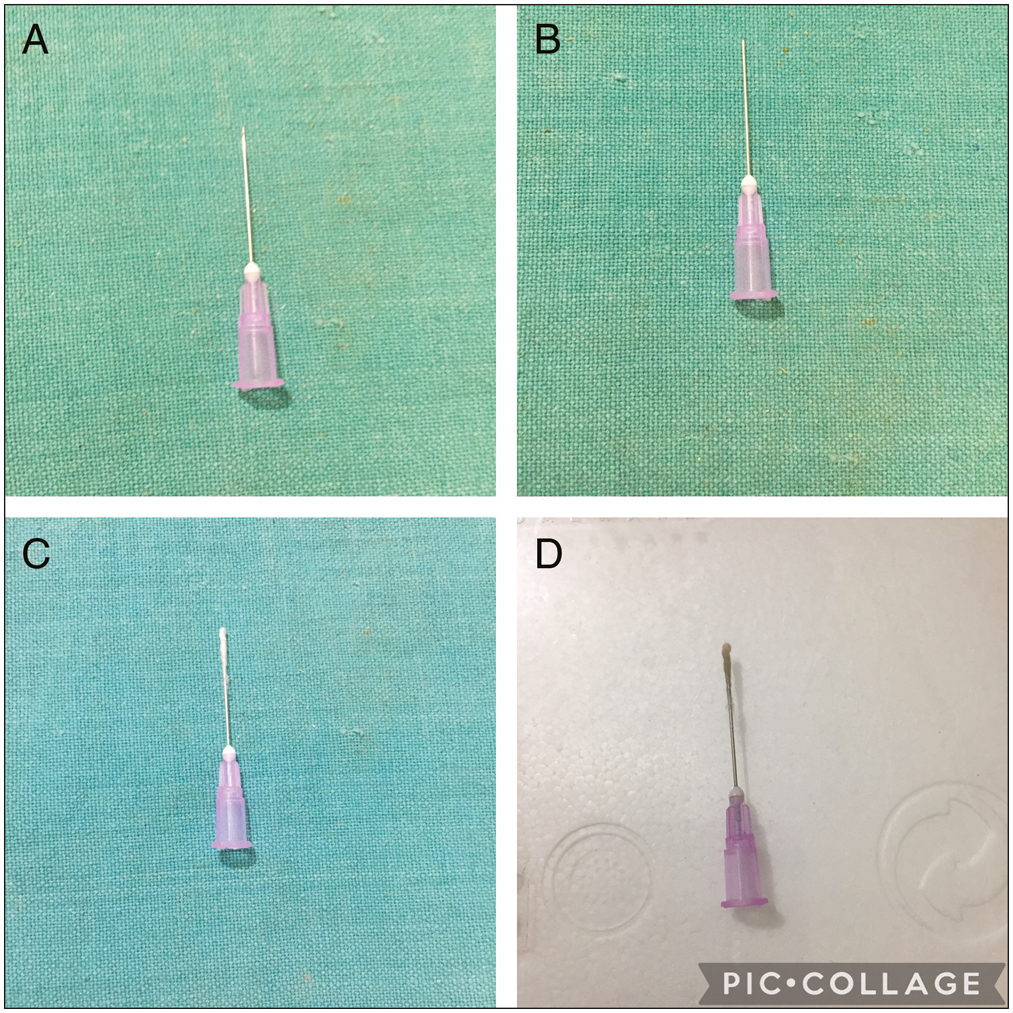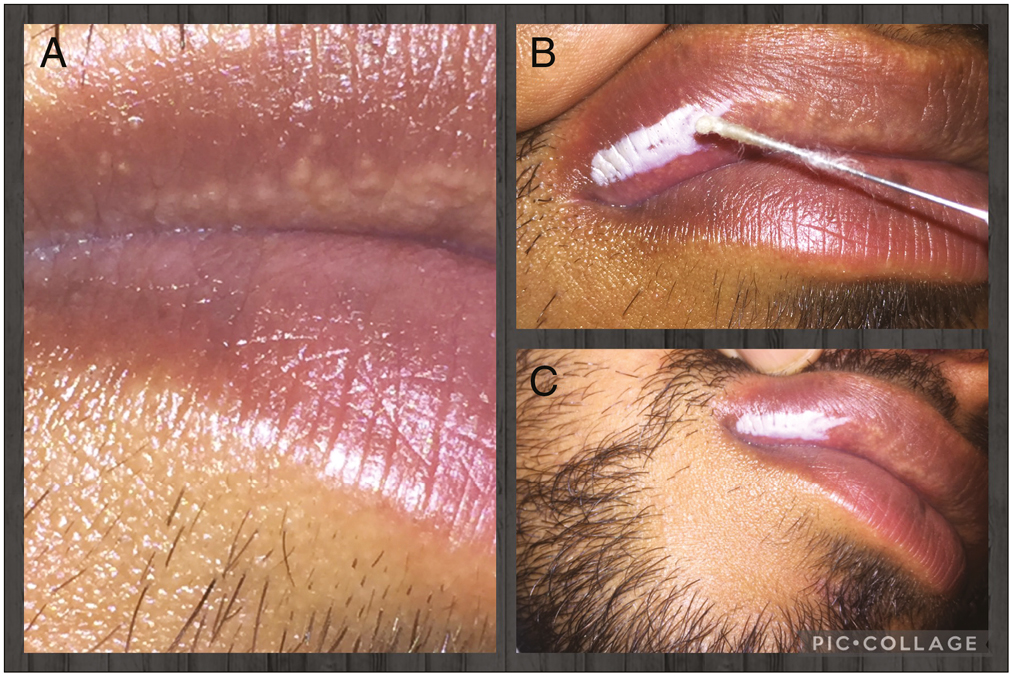Translate this page into:
Hypodermic Needle as a Safe and Easy Mini Cotton Bud Applicator for Chemical Cautery
Address for correspondence: Dr. Muhammed Mukhtar, Mukhtar Skin Centre, Katihar Medical College Road, Katihar 854105, Bihar, India. E-mail: drmmukhtar20@gmail.com
This article was originally published by Wolters Kluwer - Medknow and was migrated to Scientific Scholar after the change of Publisher.
Abstract
Abstract
To simplify the chemical cautery, micropipette and syringe outlet are stuffed with cotton wick for a better flow of chemical due to capillary action. However, the corrosive effect of chemicals on metallic needle and on rubber/plastic cap of the piston leads to the leakage of chemicals. Hypodermic needle and tooth picks have been used for chemical cautery, but it requires frequent dipping into the chemical, which is not safe. A bent (hooked) hypodermic needle is described as an alternative for safe, quick, and precise cauterization of multiple small skin lesions.
Keywords
Bent
cautery
chemical
cotton twig
hypodermic needle
mini cotton bud
PROBLEM
In general, chemical cauterization is done with phenol and trichloroacetic acid to destroy skin lesions. To simplify the procedure, micropipette and syringe outlet are stuffed with cotton wick for a better flow of chemical due to capillary action.[12] However, the corrosive effect of chemicals on metallic needle and on rubber/plastic cap of the piston leads to the leakage of chemicals if the chemical remained in the syringe for a long period. Hypodermic needle and tooth picks have been used for chemical cautery, but it requires frequent dipping into the chemical, which is not safe. Hypodermic needle is described as an alternative for safe, quick, and precise cauterization of multiple small skin lesions.
PROCEDURE
To procure this apparatus, there is a need of a hypodermic needle and cotton wick. The bevel tip of the needle is bent to get a little hook, and over it and its shaft, a small cotton twig is wrapped to get a small cotton bud applicator. The needle is ready to use for chemical cauterization [Figure 1A–D]. After this, the distal part of the needle is dipped into the chemical (trichloroacetic acid, carbolic acid, or desired chemical peeling agents), and the lesion is cauterized without frequent dipping of the needle. By this needle, a number of mini lesions can be cauterized by the vertical application of the needle without surrounding tissue damage. The needle hook is helpful in preventing the slippage of the cotton twig from the needle shaft, which is required for safe chemical application. The tip off needle with mini cotton bud is good for destroying mini skin lesions [Figure 2A–C]. The cotton bud and wrapped cotton on needle shaft act as a small instant cartridge of chemical and a better applicator because of its capillary action as compared to the needle and tooth picks. The spots size depends upon the angle of holding the needle during cautery. The needle can be guarded and capped with hypodermic needle for safety and sterility. Thus, a hypodermic needle with mini cotton ball is a good option for chemical cautery in office.

- (A)–(D) Hypodermic needle is customized into mini cotton ball applicator for chemical cautery

- (A)–(C) Fordyce spots are cauterized with hypodermic needle cotton bud
POINTS TO LEARN AND ADOPT
It is cost-effective and is procured easily.
The hooked hypodermic needle gives a better fixation of cotton twig.
The stuffs used are readily available in the clinic.
There is no problem of frequent dipping of the needle during chemical cautery because of cotton twig as a mini chemical cartridge.
There is less or no chance of chemical injury.
Declaration of patient consent
The authors certify that they have obtained all appropriate patient consent forms. In the form the patient(s) has/have given his/her/their consent for his/her/their images and other clinical information to be reported in the journal. The patients understand that their names and initials will not be published and due efforts will be made to conceal their identity, but anonymity cannot be guaranteed.
Financial support and sponsorship
Nil.
Conflicts of interest
There are no conflicts of interest.
Acknowledgement
None.






